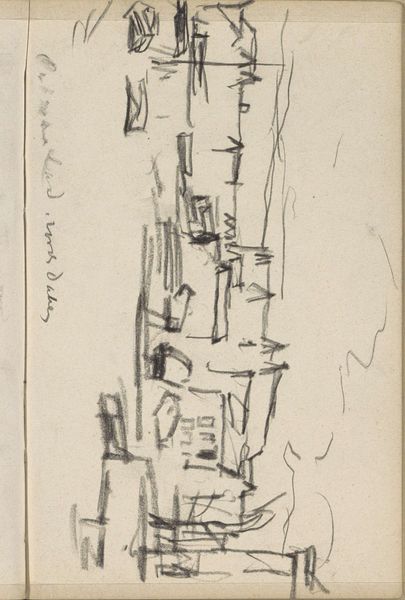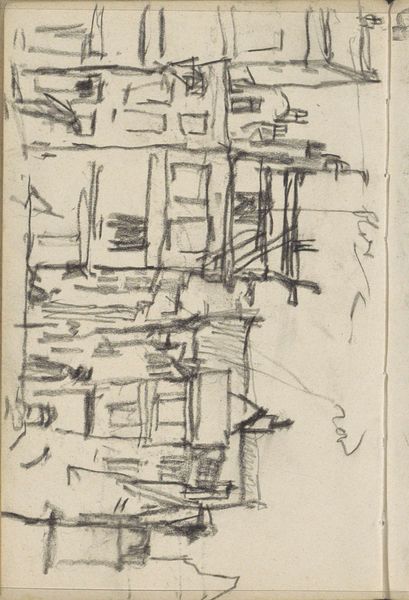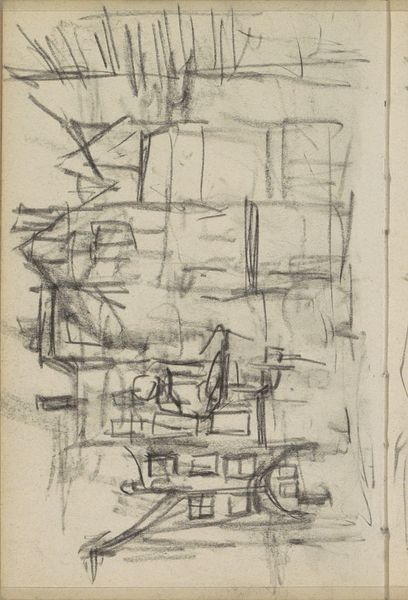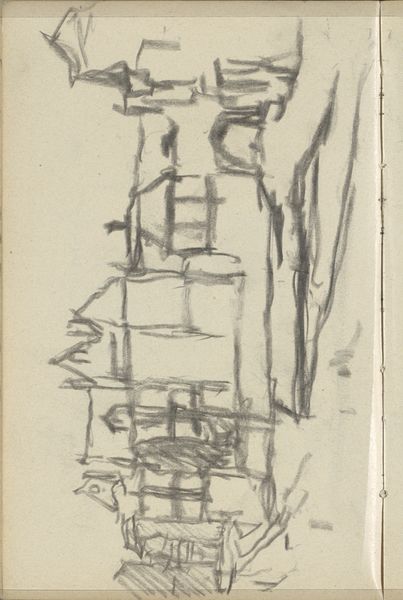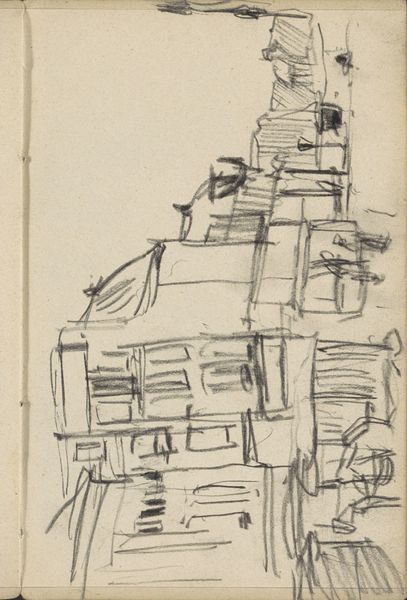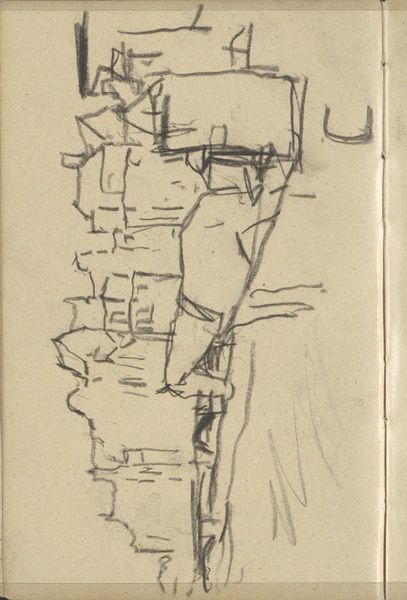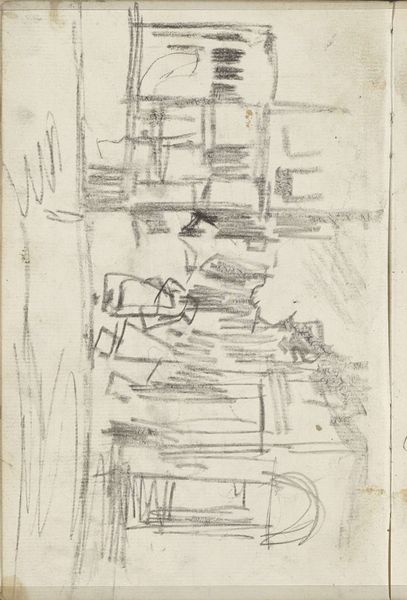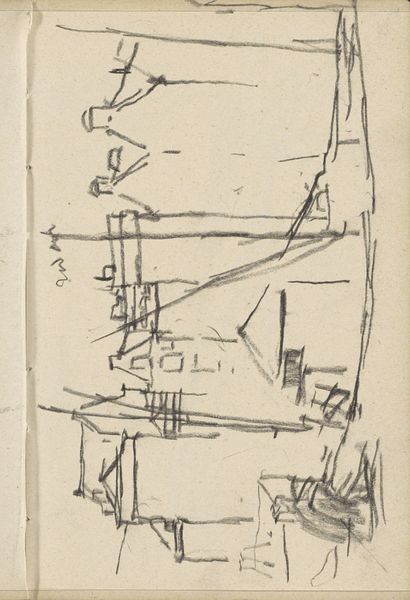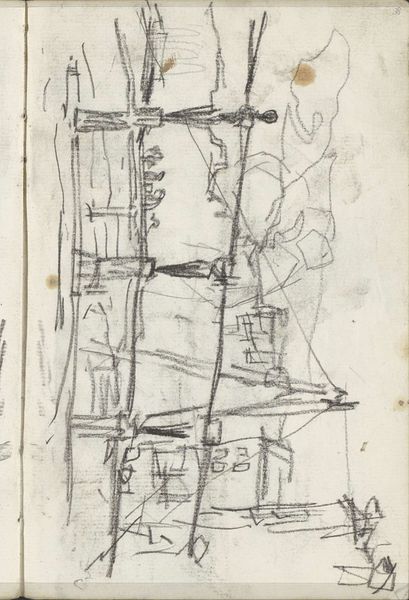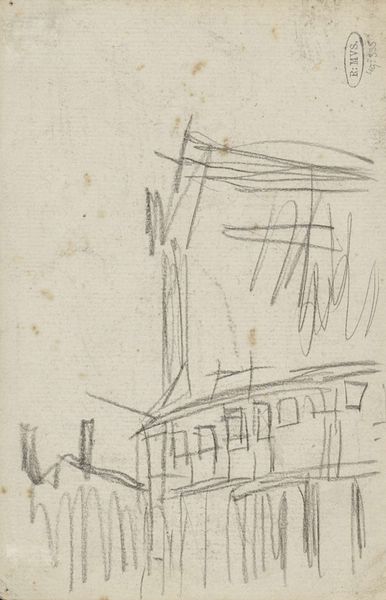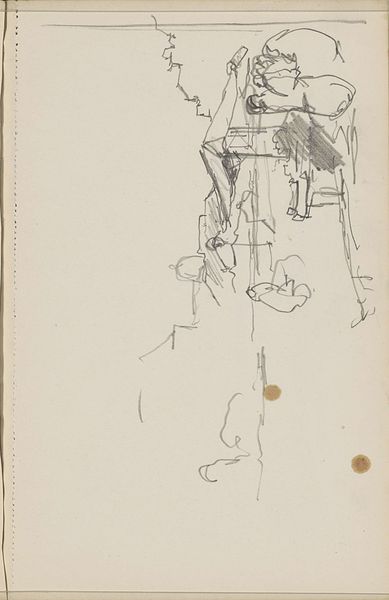
Copyright: Rijks Museum: Open Domain
Editor: This is George Hendrik Breitner's "View of the Damrak in Amsterdam," made between 1912 and 1919. It's a graphite drawing on paper. I find the sketch-like quality intriguing. What jumps out to you? Curator: I see a fascinating record of labor and process. Notice the visible lines, the erasures perhaps. Breitner isn't hiding the *making* of this image. This wasn’t a precious painting on canvas, but a quick, perhaps disposable study, on humble paper. Editor: So, it's more about the process than the final product? Curator: Precisely! Consider the economic context: Breitner, though successful, was participating in a broader culture of art production. This drawing exists alongside mass-produced imagery, photography, and burgeoning advertising. Editor: In what way? Curator: Breitner’s impressionistic style echoes a world of reproduced images, capturing a fleeting moment. How does this challenge conventional hierarchies separating "high" art from commercial imagery? Editor: I see what you mean! By using simple materials and focusing on capturing a fleeting moment, he kind of democratizes the art-making process. It’s not about perfect execution. Curator: Exactly! It speaks to the broader social context, suggesting that art doesn’t have to be monumental or precious. It can be immediate, accessible, even raw. Think of the labor involved, not just Breitner’s hand, but the production of graphite, paper… the systems enabling this image. Editor: I never thought about it that way! Focusing on materials and labor really changes how I see this drawing. Thanks! Curator: My pleasure. Seeing art this way reveals fascinating social narratives.
Comments
No comments
Be the first to comment and join the conversation on the ultimate creative platform.
